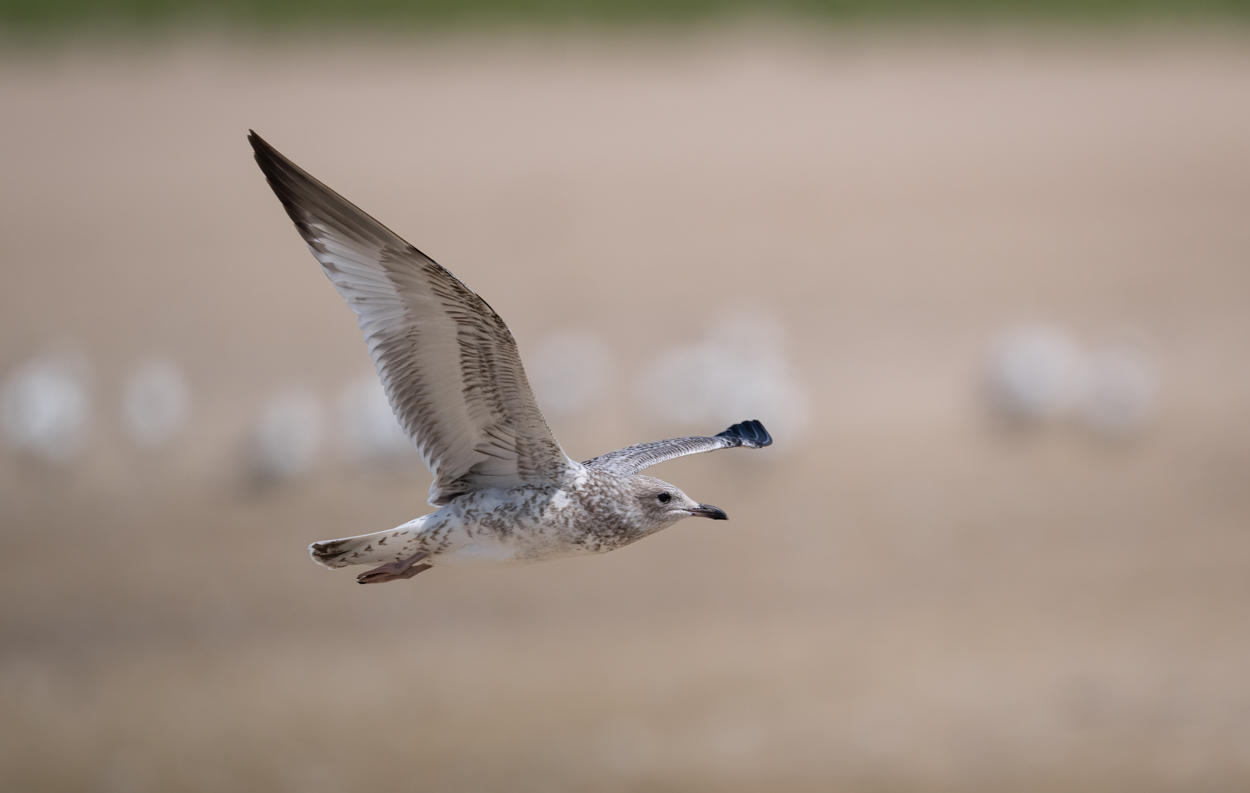
Gulls are a familiar sight along coastlines, lakes, and rivers, but identifying them can be a challenge even for experienced birdwatchers. These seemingly ubiquitous birds belong to the family Laridae and are often mistaken for one another due to their similar appearances. However, with careful observation and knowledge of key field marks, you can become adept at distinguishing between different species.
Firstly, a note on the term ‘seagull’. This incorrect term is often applied to all gull species, despite some being found very far from the sea, (the gray gull breeds in the North Chilean deserts) and there is no actual species called a seagull. It has been in popular use for hundreds of years, though, so you can be forgiven for using it yourself. Just be aware that among many birders, the term is often frowned upon.
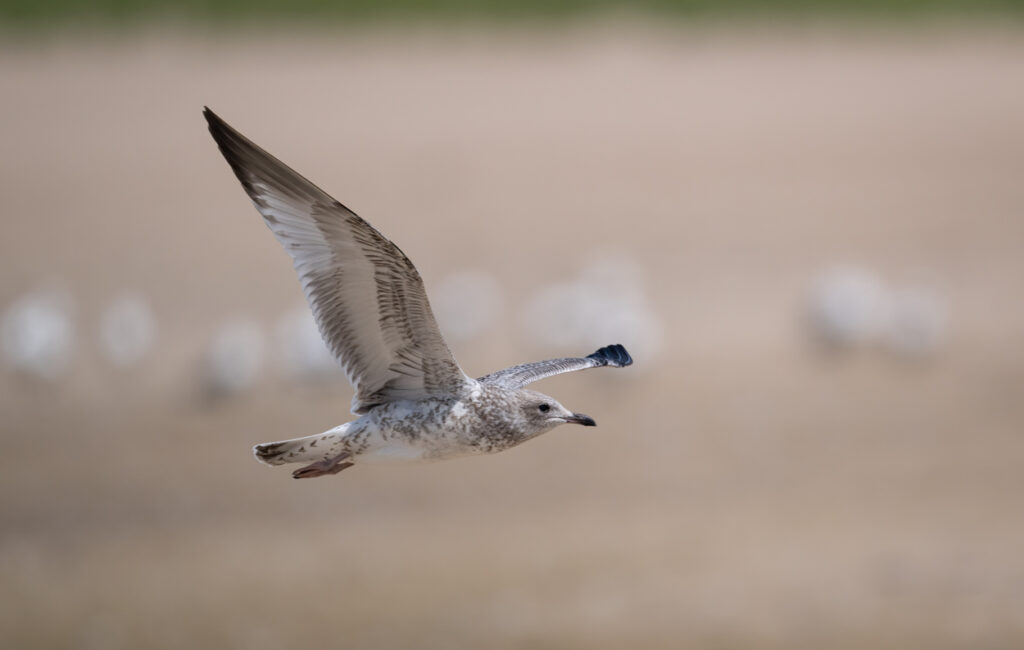
Gulls are notoriously hard to identify for several reasons. They undergo complex molt cycles, meaning their plumage can vary significantly throughout the year, and juvenile gulls look very different from adults. Even among adults, the plumage can change depending on the season. Many gull species exhibit subtle differences in size, shape, and coloration that can be difficult to discern without close examination, so it is best to try focusing on specifics such as leg color, bill shape and color, overall size, and wing pattern, and you’ll soon begin to unravel the mystery of gull identification.
The best place to start is by assessing the overall size of the bird—this can often help narrow down the possibilities. There are few very large gull species, with the Great Black-backed being the largest, and then the Glaucous gull next, but most will be much smaller and more compact. Leg color is a strong indicator, particularly between species like the Ring-billed Gull (yellow legs) and the Herring Gull (pink legs). The bill shape and color are also crucial; for example, the black ring on the bill of the Ring-billed Gull is a distinctive feature.
As with most bird identification, pay particular attention to the plumage, particularly the color of the back and wings, known as the mantle. The wing shape and the presence of white spots or “mirrors” on the wingtips are other key details that can aid in identification.
Here are some of the most common gull species found in North America and Europe, along with the key characteristics to look for when identifying them:
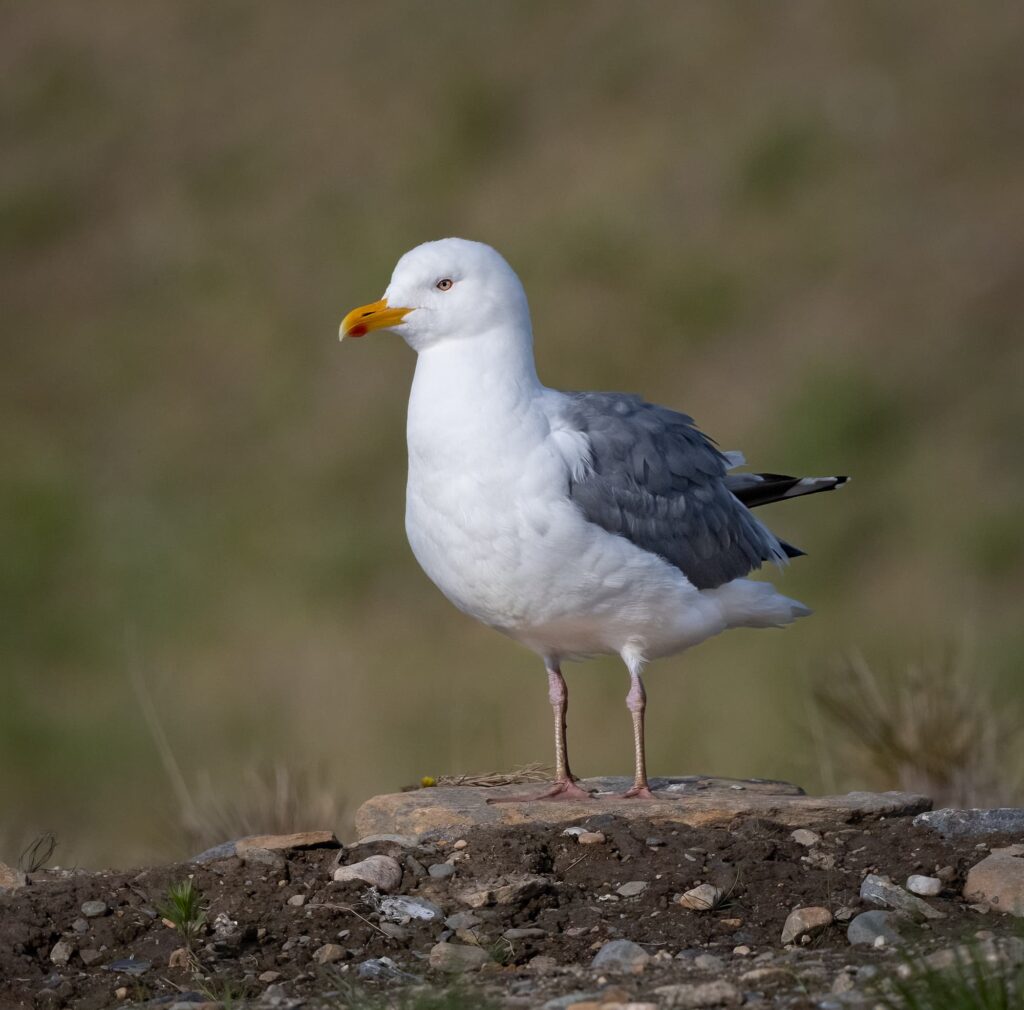
Herring Gull
– Size: Large, with a wingspan of about 55-65 inches (140-165 cm).
– Bill: Yellow with a red spot on the lower mandible.
– Leg Color: Pink or flesh-colored.
– Plumage: Adults have a light gray back and wings, with white underparts. Wingtips are black with white “mirrors” (spots).
– Juveniles: Mottled brown and white, gradually becoming paler with age.
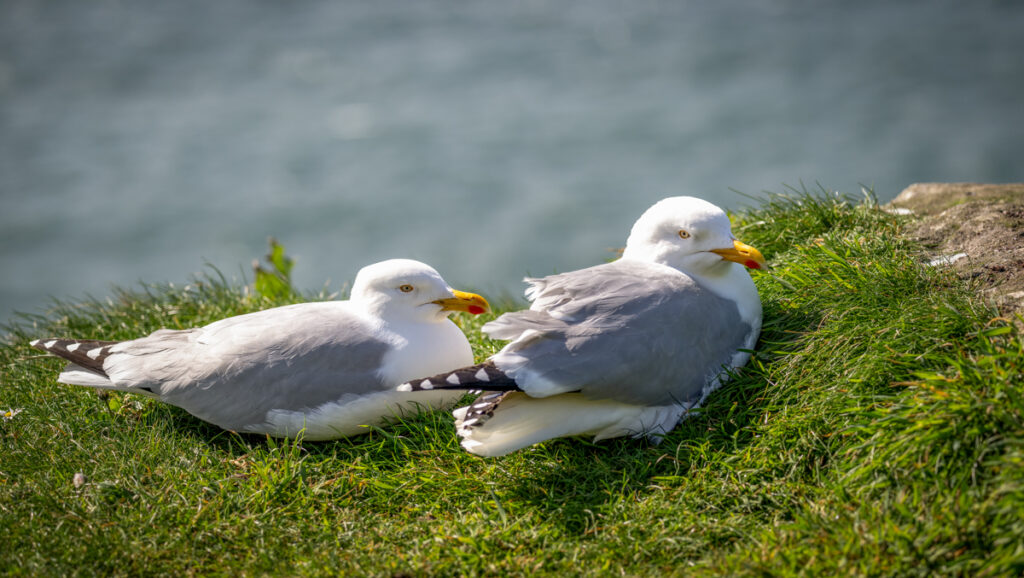
Ring-billed Gull
– Size: Medium, with a wingspan of about 41-46 inches (105-117 cm).
– Bill: Yellow with a distinct black ring near the tip.
– Leg Color: Yellow.
– Plumage: Adults have a light gray back and wings, white underparts, and black wingtips with white mirror spots.
– Juveniles: Brown and streaky, similar to Herring Gulls but smaller and with a more slender bill.
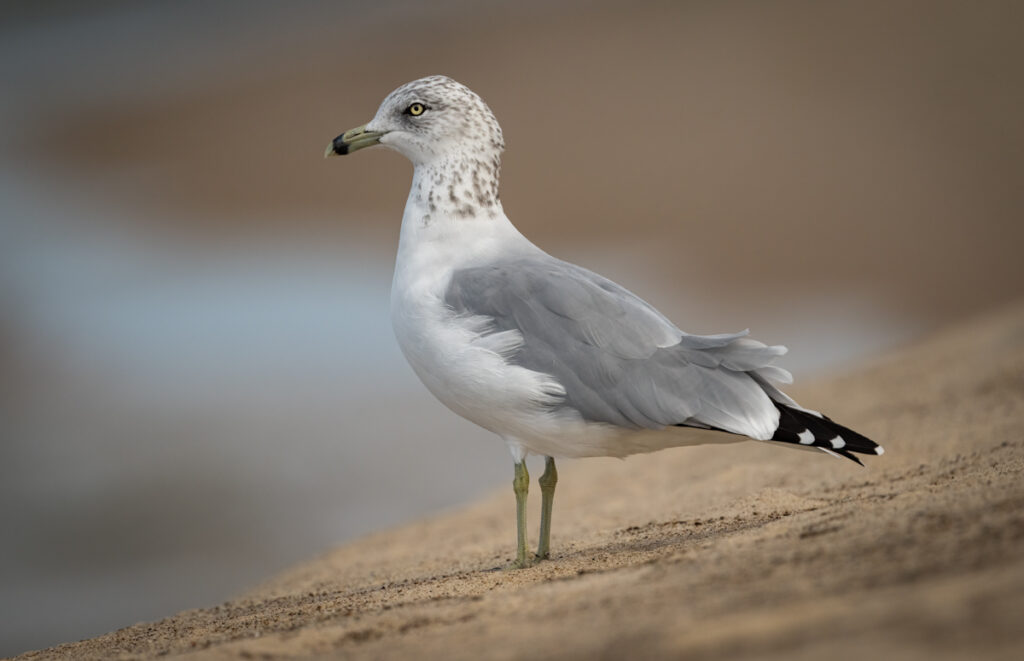
Great Black-backed Gull
– Size: The largest gull, with a wingspan of 65-79 inches (165-200 cm).
– Bill: Heavy, yellow with a red spot on the lower mandible.
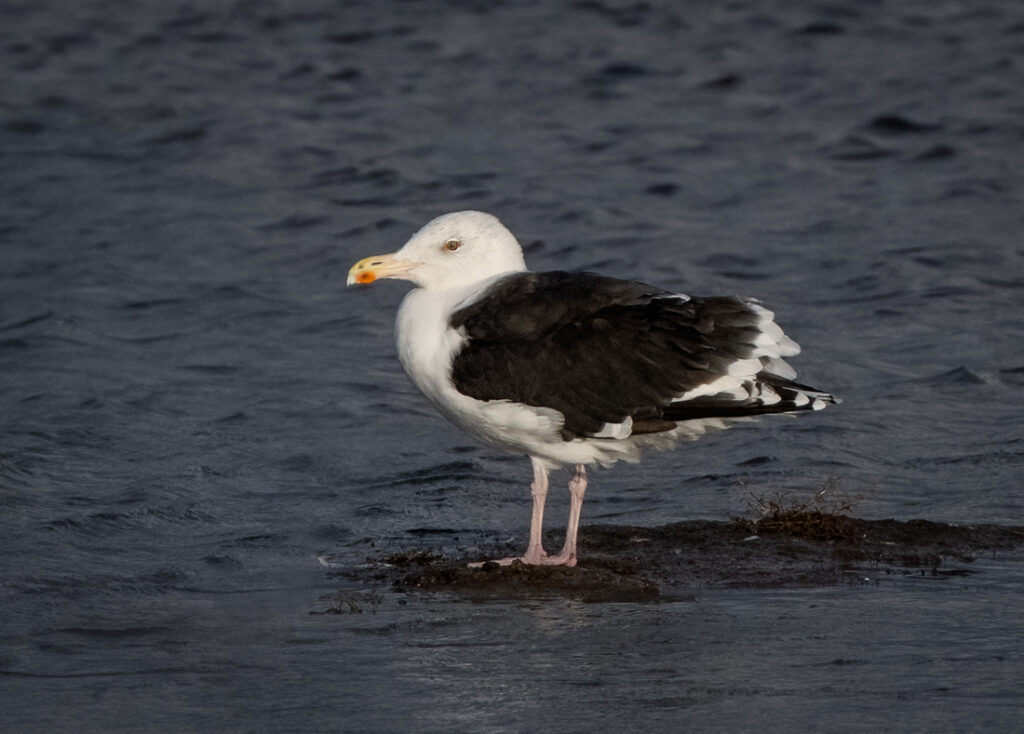
– Leg Color: Pink.
– Plumage: Adults are unmistakable with a dark black back and wings, contrasting with white underparts and head. Wingtips are also black.
– Juveniles: Dark brown overall with paler mottling, gradually lightening with age.
Lesser Black-backed Gull
– Size: Slightly smaller than the Herring Gull, with a wingspan of 49-59 inches (125-150 cm).
– Bill: Yellow with a red spot.
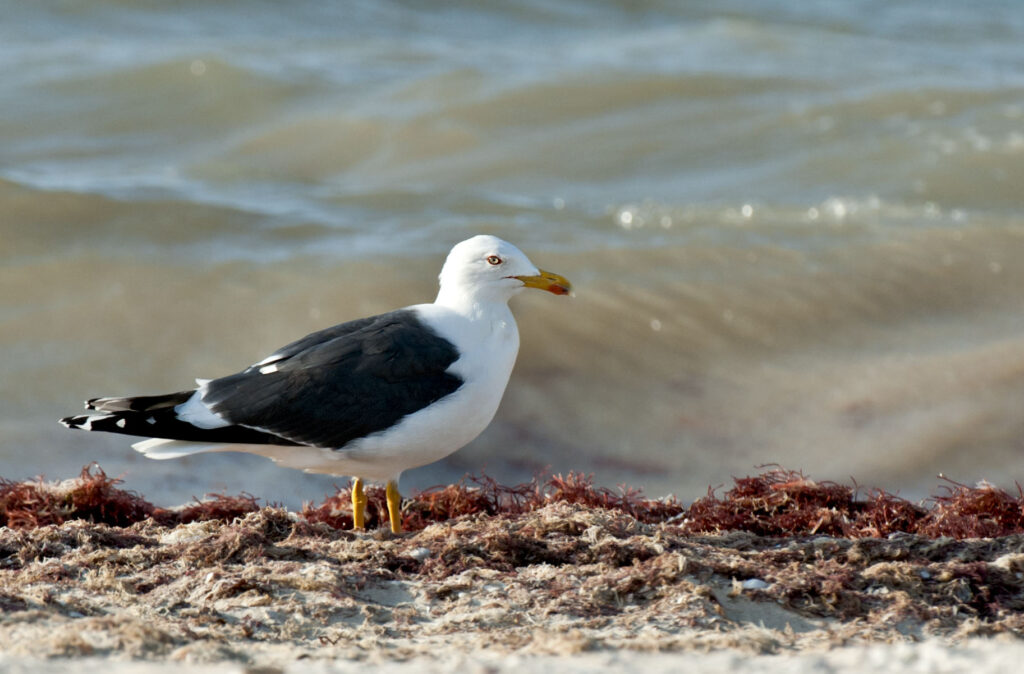
– Leg Color: Yellow.
– Plumage: Adults have a dark gray to nearly black back and wings, with white underparts. Wingtips are black with white spots.
– Juveniles: Brown with dark streaks, becoming lighter and more uniform as they mature.
Laughing Gull
– Size: Medium, with a wingspan of about 36-47 inches (92-120 cm).
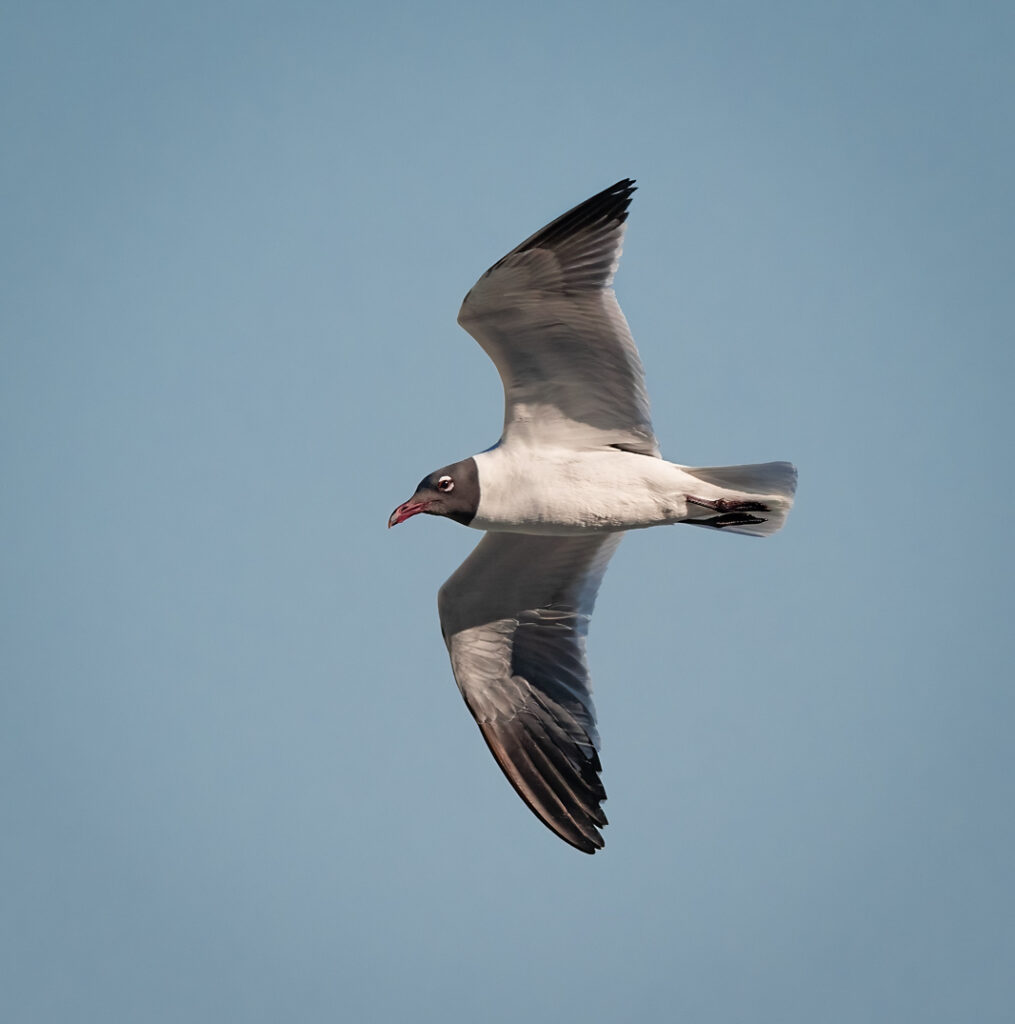
– Bill: Black during the breeding season, reddish in non-breeding adults.
– Leg Color: Reddish to black.
– Plumage: Breeding adults have a distinctive black head and white crescents around the eyes, gray back, and white underparts. In the non-breeding season, the head becomes white with a smudge of gray.
– Juveniles: Grayish brown, with a distinctive dark bill and legs.
While identifying gulls can be daunting, with practice and careful observation, you can learn to spot the subtle differences between species. By focusing on specific field marks such as leg color, bill shape, and plumage, you’ll gradually become more confident in distinguishing these challenging yet fascinating birds. So next time you’re by the water, take a closer look—you might just spot something new!


